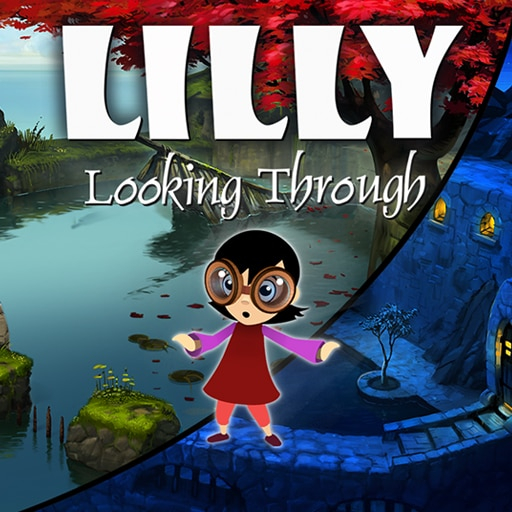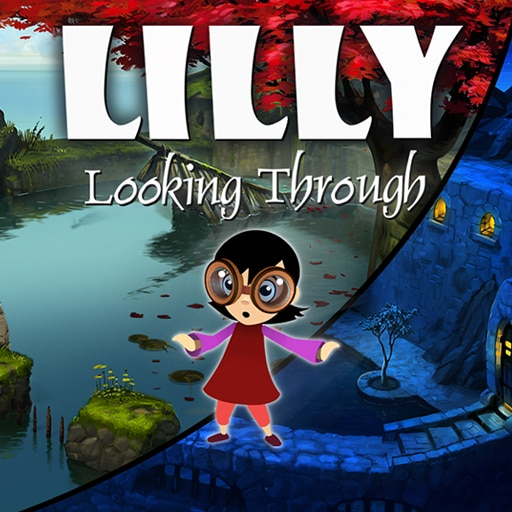Existing User Log In
New User Registration
Register for a free account to gain full access to the VGChartz Network and join our thriving community.





America - Front


America - Back

Misc
 01/01/14 Unknown
01/01/14 Unknown  (Add Date)
(Add Date) (Add Date)
(Add Date)
| Owners: | 0 |
| Favorite: | 0 |
| Tracked: | 0 |
| Wishlist: | 0 |
| Now Playing: | 0 |
Point and click adventure games, once a dying breed, have begun to repopulate the video game ecosystem over the last few years. Why this sudden re-emergence? There are multiple reasons, including the growth of Steam, indie developers and of course Kickstarter. Lilly Looking Through came about through Kickstarter and is intended as a click and point animated adventure for all ages. While it’s both engaging and aesthetically pleasing, Lilly Looking Through sadly has its fair share of problems.
As to how this game came to be, you need only go back in time to February 8th 2012. This was the date the gaming industry would unknowingly change for good thanks to the launch of the Double Fine Adventure campaign (that game is now known as Broken Age) on the crowd funding website Kickstarter. While DFA was not the first video game to be crowd funded, it was the first to generate mass publicity for the notion of crowd funding for video games. With this the floodgates opened and hundreds of video game developers have since added their projects to the site, in hopes of raising funds to complete and/or create their visions. On May 29th, Steve Hoogendyk (the designer of LLT) launched the Lilly Looking Through campaign with a modest goal of $18,000. After 32 days the campaign ended and had managed to raise a total of $33,516, which also meant that it broke its first stretch goal of more content and a slightly longer game length, although it was unable to achieve its stretch goal of Android and iOS ports.
Lilly Looking Through follows our heroine Lilly as she goes on an adventure to save her brother, Row, who has been taken away by a magical red scarf. That is the story, such as it is, and very little is added to that basic starting point. One thing you'll likely notice is the lack of in-game dialogue - often one of the staples of the adventure genre - and while this does stand out as an odd omission it doesn’t take much away from the game's enjoyment. Instead, it actually makes for a more relaxing gameplay experience, but it does mean there's a lack of connection felt to either Lilly or Row because they feel like background pieces, rather than complete characters.
The game follows the basic principles of most click and point games with Lilly interacting with objects on the screen. She can also move around certain areas, giving her more interactive options. Certain items can be directly picked up and moved around to help solve puzzles. Items that you can pick up don’t actually have to be near Lilly, and can be moved anywhere across the screen. Lilly also has access to special goggles, which allow her to travel back in time and interact with the past just as she can in the present. This adds an extra element to the puzzles found in the game; you will, to give a basic example, get across a pit in the present by walking across a bridge that used to be there in the past, or move an acorn in the past that grows into a tree that connects to your platform in the present. LLT also differentiates itself from other point and click games through its the lack of an inventory system; all of the actions you perform as Lilly are done through interactions with objects found in levels (such as buttons or levers), rather than the usual 'pick up and store Item A until you need to use it on Object B'.
Most of the puzzles are unconnected; each tends to have its own self-contained and unique mechanic that you must solve. Most of the early puzzles are straight forward and will take someone with even a small amount of adventure gaming experience little effort to solve. As you progress through the game, the puzzle difficulty ramps up, and I was often left stumped. While the game does have a hint button, it does little to help, and only highlights everything on the screen that you can interact with. Much of the game's difficulty in general comes from the lack of any guidance, which leaves you resorting to interacting with anything in hopes it will advance the game. Luckily, LLT doesn’t punish you for experimenting and often the solution will come to you after interacting with enough objects.
By far the strongest aspect of the game is the backgrounds, which are all beautifully hand painted and give life to the world. Each of the game’s areas gives off a different theme and the past locations are not just carbon copies but instead often tend to be a polar opposite. However, while the backgrounds are amazing to look at, they don’t mix well with Lilly’s animations, which often makes her look awkward and out of place in the game. This issue often comes up when Lilly is interacting with the background.
Lilly Looking Through’s music is calming and contemplative, perfectly fitting the scenery. While none of the music is memorable, its simplicity and tranquil melody will often calm you down after getting frustrated with a puzzle. While there isn’t any dialogue, there are a few words yelled out by the characters throughout the game (unfortunately this is more likely to make you me cringe than anything). The biggest downfall of Lilly Looking Through is the length; it should take the average player two hours to complete all ten puzzle areas, which isn't very long for a $9.99 game. Sadly there are no alternative ways to complete the puzzles or any extras to help convince someone to play again either. While the game is very enchanting in its own way, it’s hard to recommend a purchase given how little you'll get out of it for your money.
There is a lot to love about Lilly Looking Through, from the charming atmosphere to the generally enticing and user-friendly gameplay. Unfortunately the game also leaves a lot to be desired; it's short on length and ends up leaving you with more questions than answers.









